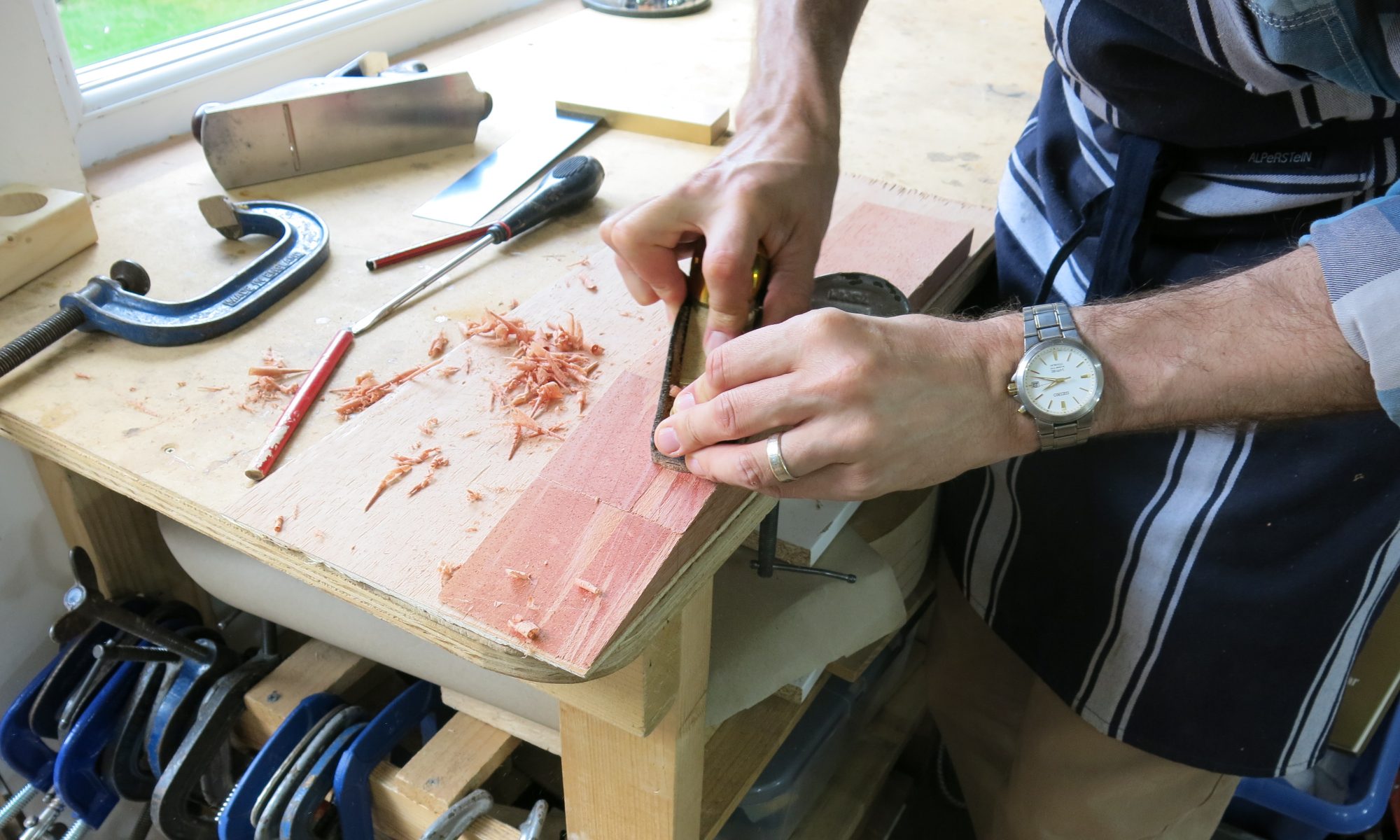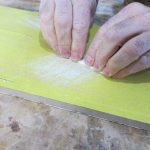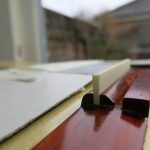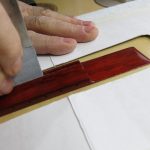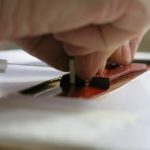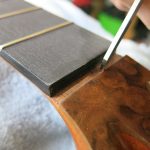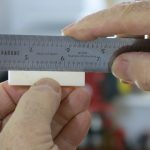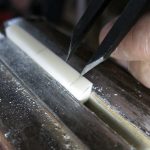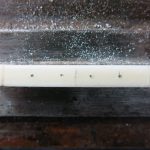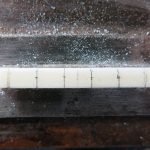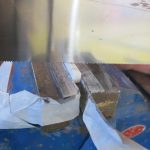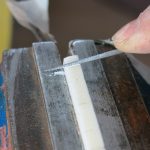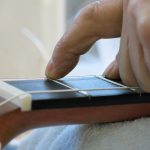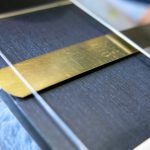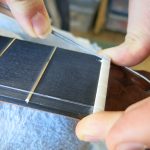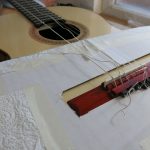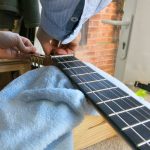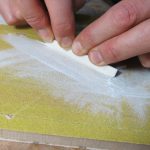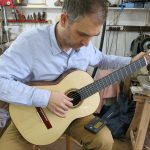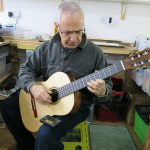Today was the last day of making my guitar with Roy. Earlier in the week, I had given the guitar a final (6th) session of ‘bodying up’ with shellac and left it to harden. I also cut the saddle to length and completed the arm rest, too.
Today began with cleaning out the saddle slot with a bit of micro-mesh wrapped over the end of a scraper. Similarly, I scraped the end of a chisel across the nut slot to ensure it was clean of shellac. Roy then showed me how to roughly determine the height of the nut by placing a 1mm thick steel rule on the frets and marking along the top of it.
The length of the nut didn’t need adjusting (52mm) and so I sanded it down to height as well as the back edge out of the way of the strings, and then marked the centre. I then marked 5mm in at each end for the 1st and 6th strings. I cut shallow slots by simply pulling back on a small saw. Then, using dividers, I made four more marks for the remaining strings 8.66mm apart. I checked and adjusted the string spacing by watching how the dividers fell over the centre line. Then, using a small engineer’s square (one of the most used tools in Roy’s workshop), I marked the string slots with a sharp pencil and pulled the saw back over them.
Then, using a rat tail file, I used the cuts to create semi-circle slots (not V slots) that would eventually accommodate about half the depth of the string.
To check the string height, Roy showed me a technique that he said James Lister uses. It involves pressing the string down in front of the second fretwire and measuring the height of the string above the first fretwire. Our aim was to reduce it to 0.25mm – barely anything. We checked this with a feeler gauge.
Once I had reduced the 1st and 6th strings to the right height, I proceeded to do the rest of the strings, each time using the rat tail file to deepen the string slot. I finished the nut by angling the exit points of strings 2 to 5 to follow the line to the tuners.
We then turned to the saddle to adjust the height of the strings above the 12th fret. The aim was to reduce the 1st string down to 2.5mm and the 6th string to 3.5mm. We checked the initial height and found the strings too high by 0.5mm, so to reduce the height at the 12th fret I needed to lower the saddle by 1mm (the strings, fretboard and saddle forming a triangle). I marked 1mm from the top of the saddle and sanded it down to the line. I also sanded the back edge at an angle to allow for the strings to slope down to the string holes.
Happy with the outcome, I sanded off the sharp edges, rubbed and polished them over with micro-mesh and slid the saddle back into place. I then replaced the test strings with D’ Addario EJ46 hard tension strings + ‘Diamond Secure‘ beads and tuned up the guitar. Our initial impression was one of delight!
In between the constant tuning, there were clear indications of a lovely sounding instrument that had finally come to life. I shook Roy’s hand and we went inside the house for lunch.
After lunch, we worked on this website.
When I got home, I did some tap tone tests using Audacity and the air resonance measurement remained exactly the same as before with it between Bb and B.
After six months, my guitar is more or less finished. I intend to play it for a week or so to let the strings settle down and make sure I am happy with the action. Following that, I will take the strings off and give it a final polish and burnish.
Today corresponds to Roy’s book pp.304-308.
